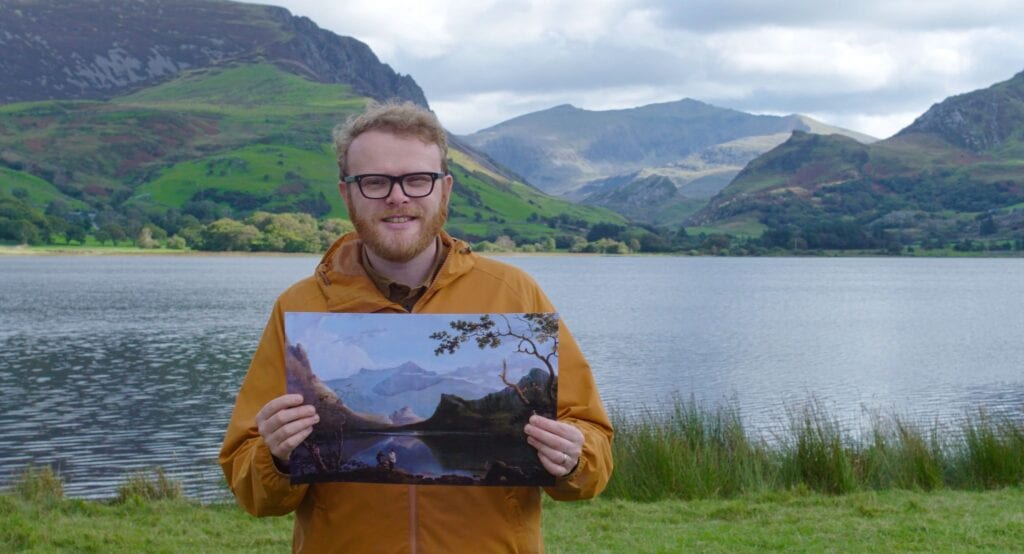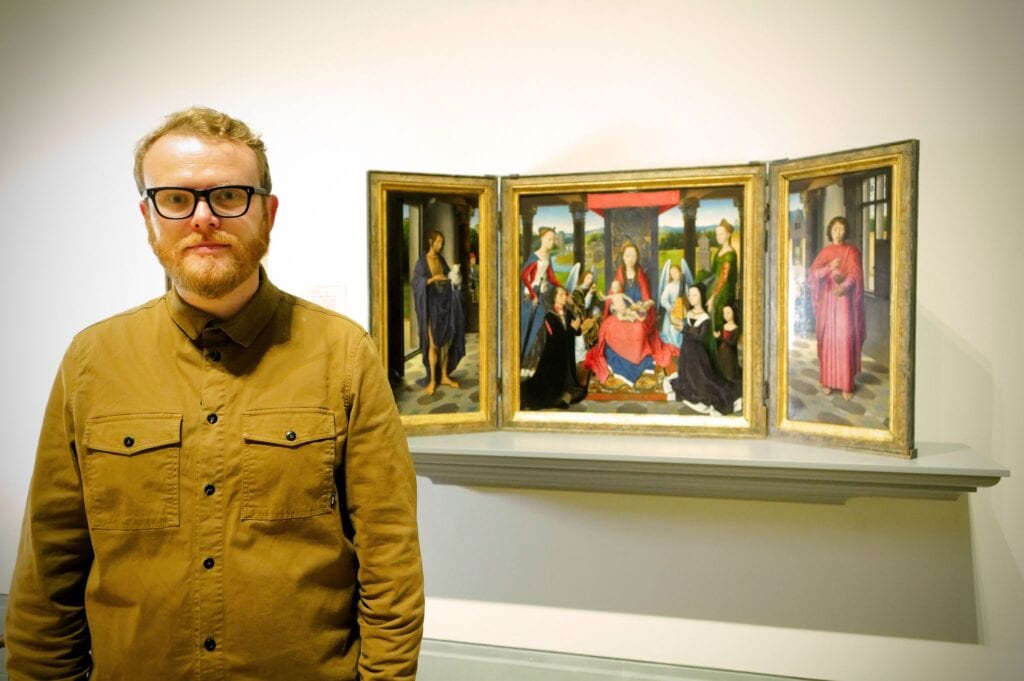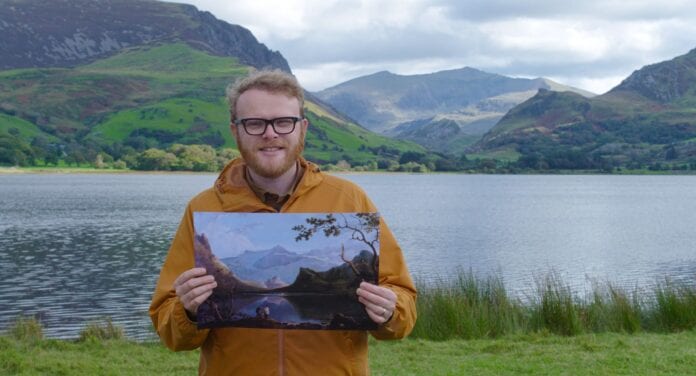From prehistoric to present day, Huw Stephens will present the story of the art of Wales as part of BBC Wales’ St David’s Day celebrations.

For the first time on network television, the full story of the remarkable riches of the art of Wales will be set out – as well as the places, people and history that inspired it.
Starting in a Neolithic chambered cairn on Anglesey, and finishing with a 21st century artwork inspired by refugee blankets, this series spans the history of the nation and sees it through the lens of Welsh art.
Presented by broadcaster Huw Stephens who won a Bafta Cymru award for his documentary exploring the Welsh music scene in 2019, The Story Of Welsh Art will take viewers on a breath-taking visual tour of the nation, from stunning bronze-age artefacts to delicate medieval stained glass, from gentry portraits by master painters to folk art, some of the most thrilling and ground-breaking landscape art in the world to award-winning cutting edge contemporary pieces.
The series will include both art made in Wales by homegrown artists as well as depictions of Wales by world-renowned artists.
Produced by Wildflame Productions, this three-part landmark production airs on BBC Two Wales and BBC Four begins on St David’s Day at 9pm, and will bring the history of Welsh art to life in HD for the first time.
Huw Stephens says: “I think most viewers will, like me, be amazed at the all the wonderful Welsh art they just don’t know about – there really is so much to discover. It’s a rich and fascinating story and it’s been a privilege to tell it on television and bring it to audiences across the UK. I’ve always been interested in art from and about Wales but doing this series has given me some new national heroes.
“We filmed in some spectacular places – so much of Welsh art is about our stunning landscape and I got to stand on the spot where some of the very best artworks have been created – in Snowdonia, Ceredigion, Powys – although funnily enough, we start the series on an industrial estate in Nantgarw, north of Cardiff. We were given access to the stores of National Museum Wales which was like going into Aladdin’s Cave – an absolute treasure trove of Welsh art.”
The Donne Triptych Profile
Episode 1 – 35:00 – 39:50

The earliest Welsh person whose painted image survives today wasn’t a saint, a prince or a warrior. He was a diplomat with his roots in Carmarthenshire, and it was a life spent rubbing shoulders with the European elite that put him at the cutting edge of art. In the Donne Triptych (c.1480), John Donne is portrayed with unprecedented realism and delicacy, complete with stubble, dishevelled hair and eye bags. Although the painting is over five centuries old, he looks like a person who might walk into the room at any moment. As presenter Huw Stephens says, “He looks like a lot of Welsh men I know! I’ve seen John Donne before”.
Painted by the Bruges artist Hans Memling, the Donne Triptych is a high point of the Renaissance in Northern Europe. Previously, art had celebrated the glory of God, not of man. Here, though, Donne and his family are portrayed as real people, dressed in their finery and immortalised by a supreme craftsman. As Emma Capron of London’s National Gallery says, “Donne is depicted with incredible vividness and realism, there’s a real presence. You can really tell that Memling would probably have painted him from life. Everybody seeing this would have understood that it was commissioned for a very important individual from the best painter of the day. A really extraordinary thing”.
Although the painting was created in Bruges, it’s said that the it contains a subtle nod to John Donne’s west Walian roots. The landscape that forms a backdrop to the painting seems to resemble not so much the flatlands around Bruges as the Donne ancestral home of Kidwelly.
Help keep news FREE for our readers
Supporting your local community newspaper/online news outlet is crucial now more than ever. If you believe in independent journalism, then consider making a valuable contribution by making a one-time or monthly donation. We operate in rural areas where providing unbiased news can be challenging. Read More About Supporting The West Wales Chronicle






















